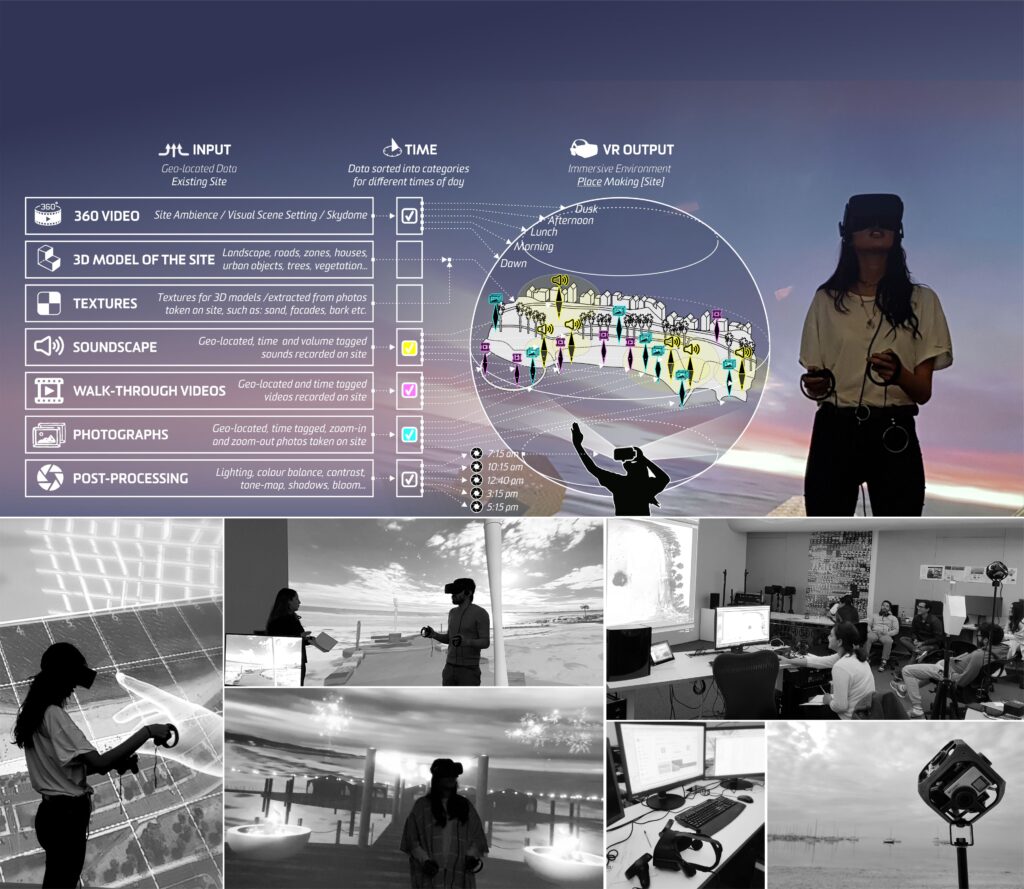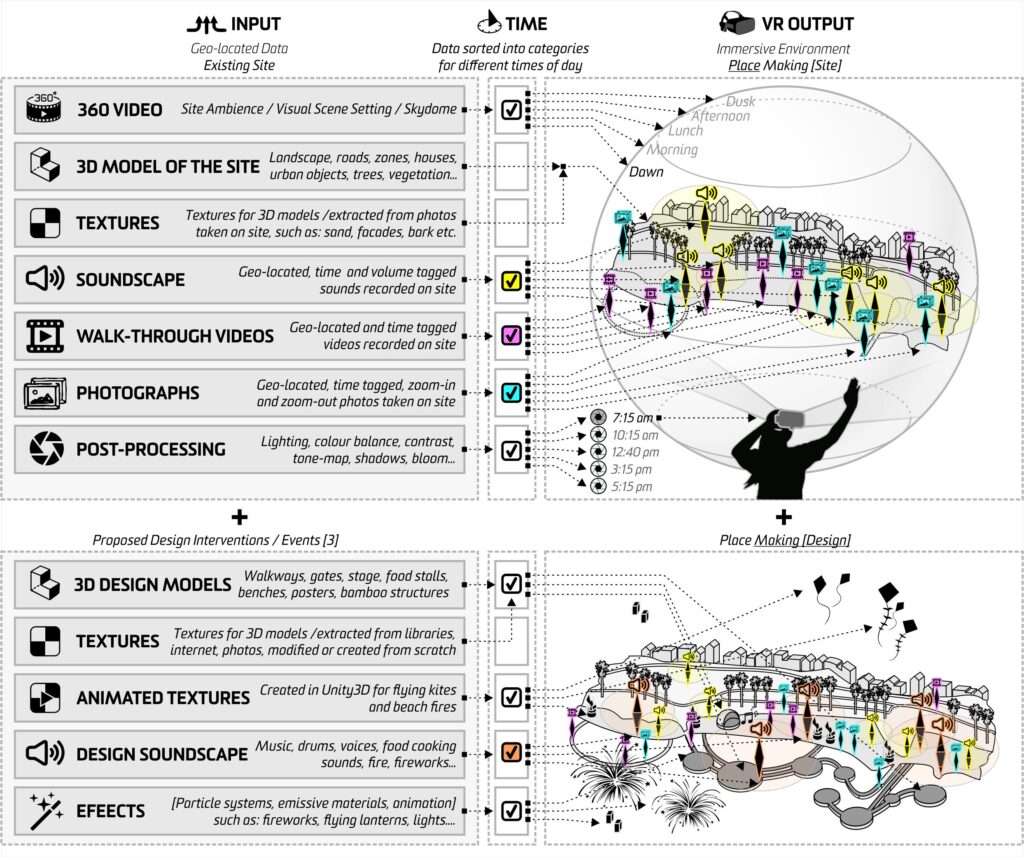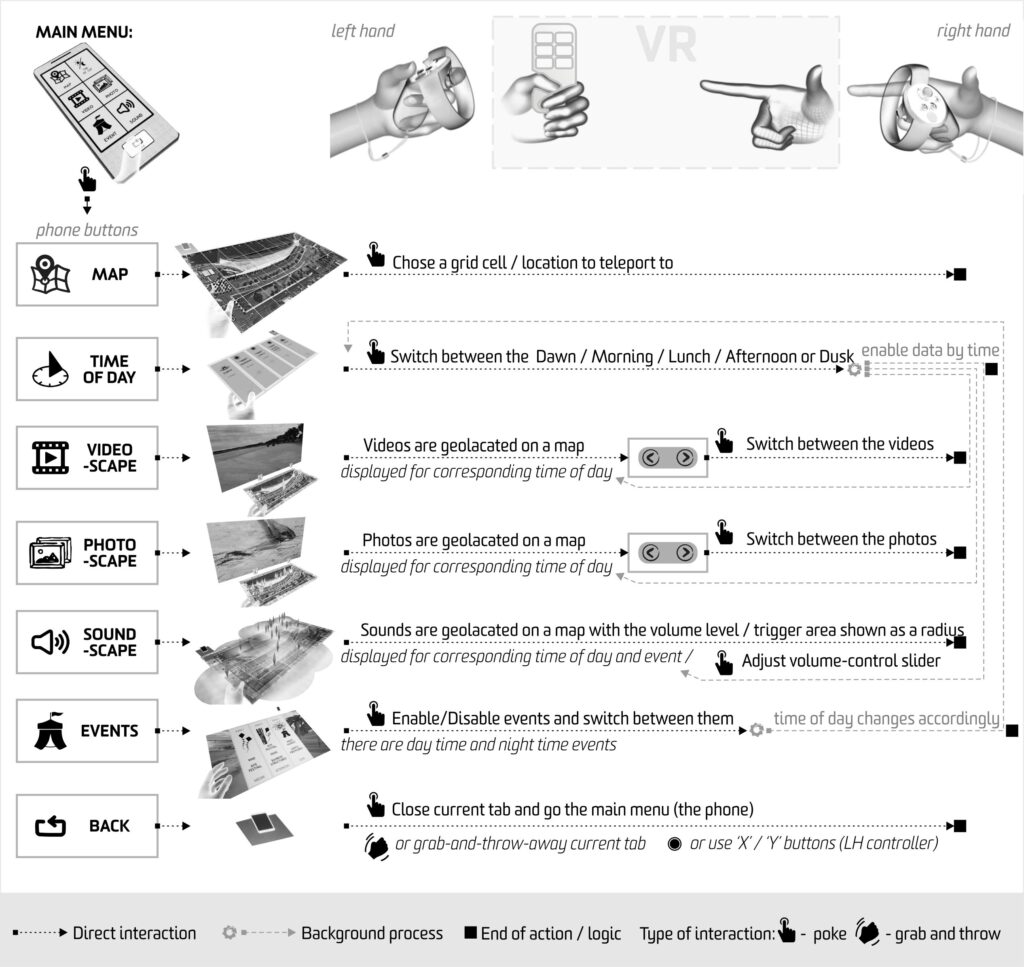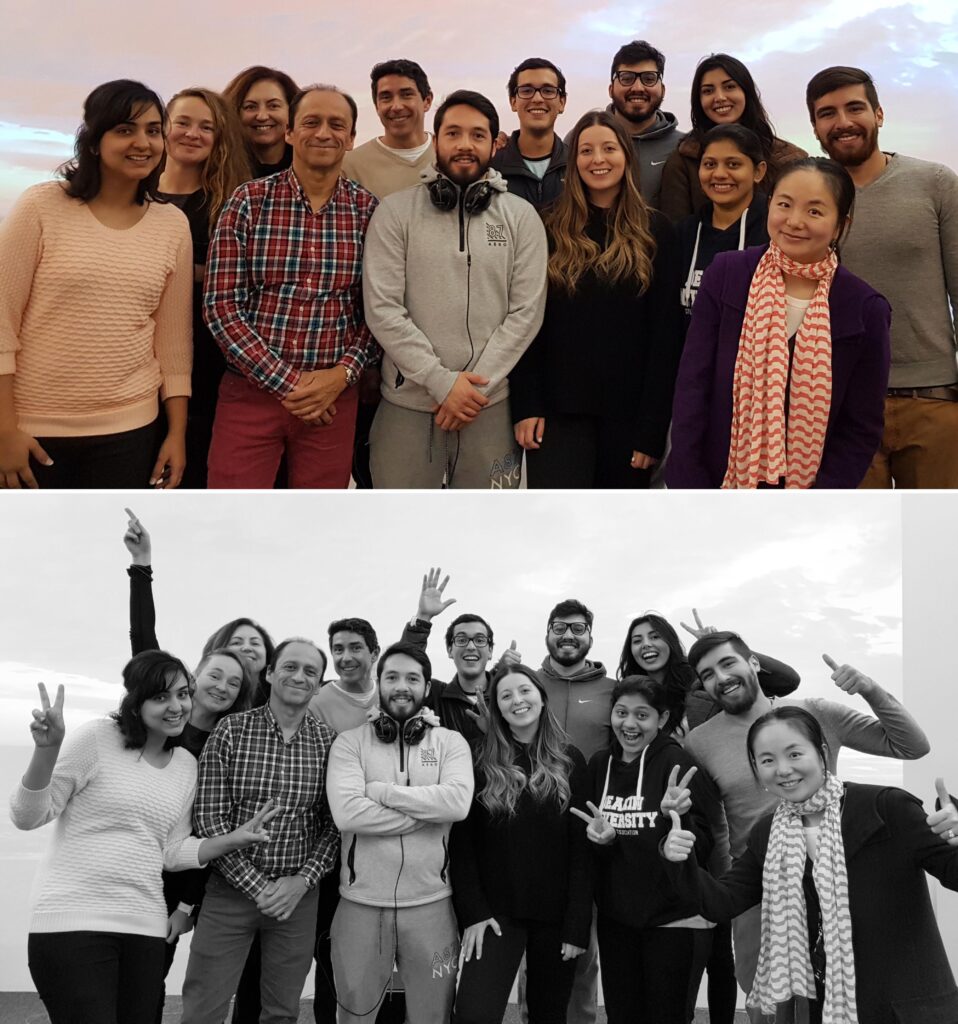THE PROBLEM:
How can the sensorial and intangible aspects of place be incorporated into decision making on the future of cities?

Research into what makes a city a great place in which to live, work and relax has developed sophisticated metrics on the component parts such as patterns of use, transport infrastructure and climate. These and a wide range of other data underpin our understanding of liveability. Such indices can be supplemented with text, photography to illustrate some qualitative aspects of place, but many of the intangible and sensory are very difficult to communicate.
OUR SOLUTION:

The increasing ubiquity of virtual and augmented reality provide new opportunities to explore the multi-sensory and temporal aspects of urban place. We take a mixed media approach, where 360 degree video taken on site at different locations and times, provide a dynamic backdrop for the 3D modelling of the urban scene and proposals for design interventions. We compliment these visual and kinaesthetic representations with audio recording taken on site, which are placed as spatially distinct sound emitters that combine to generate a dynamic soundscape as the user moves through the scene. We also foreground the temporal character of urban place, with the intent of enabling the end user to ‘dial up’ different time of the daily and seasonal cycles of site activity and environmental conditions.
CURRENT STAGE OF THE RESEARCH:
A pilot project has resulted in a sophisticated prototype VR application that can also be simultaneously broadcast to screen and surround sound systems, to allow individual and small group evaluation of urban scenes. The application uses a haptic interface (oculus touch), which enables the user to hold a virtual smartphone as the interface. The menu includes a handheld map with hotspots to allow teleporting around the site, as well as free movement within the scene. Set on the Eastern beach park in Geelong city, the ‘occupant’ can ‘dial up’ the time of day, access videos that capture typical movement paths through the site, select and hold supplementary drawings and photographs. For the pilot project, PG students developed temporary events that could occur within the public space, and an interface enables the user to switch between and experience the three proposed interventions.

FUTURE WORK:
The pilot study and prototype demonstrate proof-of-concept and informal feedback from participants and observers, is that there is much potential to develop the approach to enable the qualitative aspects place to be used to engage with communities, business and industry during the early stages of urban design. Full case studies in a range of urban and cultural contexts need to be undertaken. To this end we will develop the interface and authoring systems, including the embedding of task based activities, voice activated survey and data tracking of user behaviour, which can be used to generate statistically valid evaluation studies on the effectiveness of the approach.


